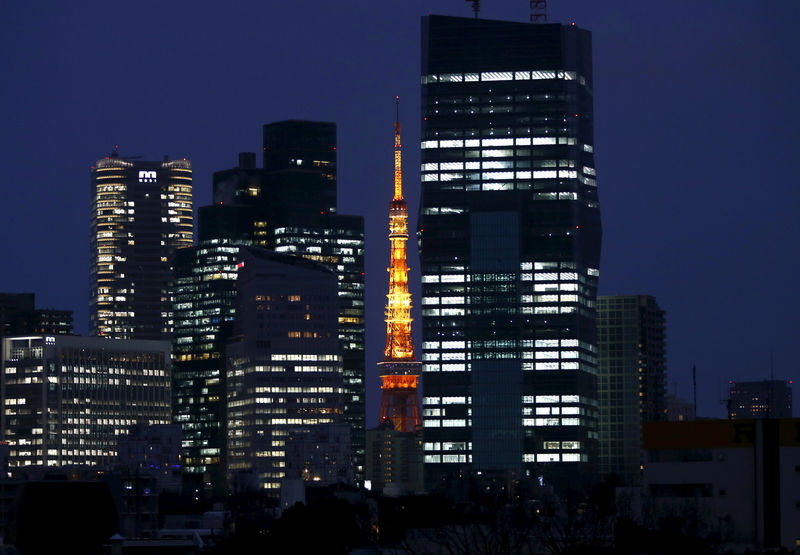(Bloomberg) -- Japan’s economy suffered a record contraction last quarter as a state of emergency and lockdowns in the country’s major export markets hammered consumer spending, production and exports. A recent uptick in infections threatens to slow the recovery.
Gross domestic product contracted an annualized 27.8% in the three months through June from the previous quarter, the Cabinet Office reported Monday, the worst for data back to 1955. Analysts had forecast a 26.9% decline. Until the pandemic, the economy’s worst single quarter was during the global financial crisis, when GDP shrank about 18%.
The figures showed a sharp drop in private consumption was the biggest drag on the economy as the virus-triggered emergency kept shoppers at home. Some factory production lines were also idled as lockdowns in the country’s major export markets contributed to the slide.
The question for policy makers and economists now is how quickly the economy can recover from the body blow and whether activity will need to be restricted again after a rise in virus cases.
Key Insights
- Monday’s data confirm that Japan’s economy shrank for a third straight quarter, hit first by trade wars and a sales tax hike, then by the virus. Activity froze up during a nationwide state of emergency in much of April and May that prompted businesses to close and discouraged people from leaving their homes.
- Retail sales and factory output are already showing signs of recovery, but the rebound is fragile with exports still weak, Japan’s virus cases rising and no Olympics-spending boost from tourists given the postponement of the Games. Analysts see GDP rebounding by double-digits this quarter, but falling far short of regaining its lost ground.
- “GDP is likely to grow more than 10% this quarter but after this huge drop, it shouldn’t be taken as great news. It will take a while for the economy to get back to anything like a normal level,” said Yoshiki Shinke, chief economist at Dai-Ichi Life Research Institute.
- Still, massive government stimulus worth about $2 trillion, including cash handouts, worker-retention subsidies and loan guarantees for businesses, have helped prevent a surge in bankruptcies or the jobless rate.
- The measures have come at the cost of adding to the heaviest public debt burden among advanced economies, with the government projecting it has no chance of balancing the budget this decade.
- Economists say more aid could come in the fall, though it may draw on reserves set aside in recent budgets. Beefed-up job-retention subsidies are due to expire at the end of next month.
What Bloomberg’s Economist Says
“Beyond 2Q, high-frequency indicators suggest the economy has been recovering in 3Q. Even so, the virus outbreak in Japan has taken a turn for the worse, prompting the government to reintroduce containment measures. This risks thwarting the recovery.”
--The Asia Economist Team
Click here to read more.
Get More
- Non-annualized GDP fell by 7.8% from the prior quarter, compared with a consensus estimate of -7.5%.
- Nominal GDP shrank 7.4%. Economists forecast a contraction of 6.5%.
- Private consumption fell 8.2% from the previous quarter, compared with a 6.9% slide forecast by economists.
- Business investment dropped 1.5%. Analysts had predicted a 4.0% decline.
- Net exports of goods and services subtracted 3 percentage points from GDP.
(Adds more details, economist comment.)
©2020 Bloomberg L.P.
